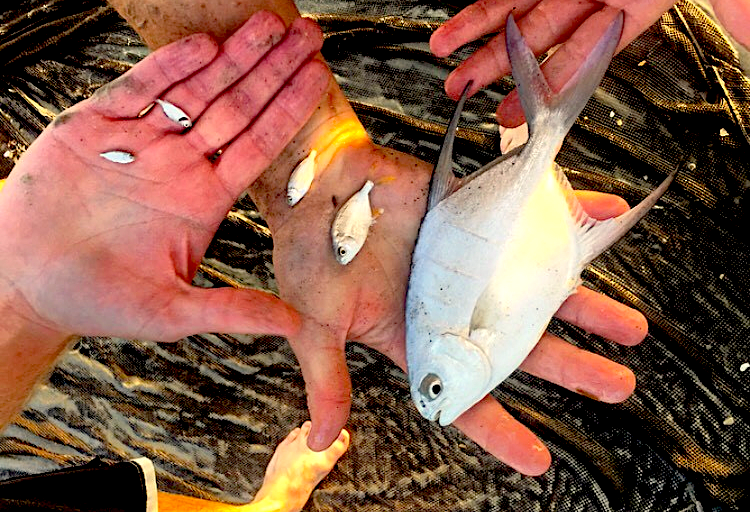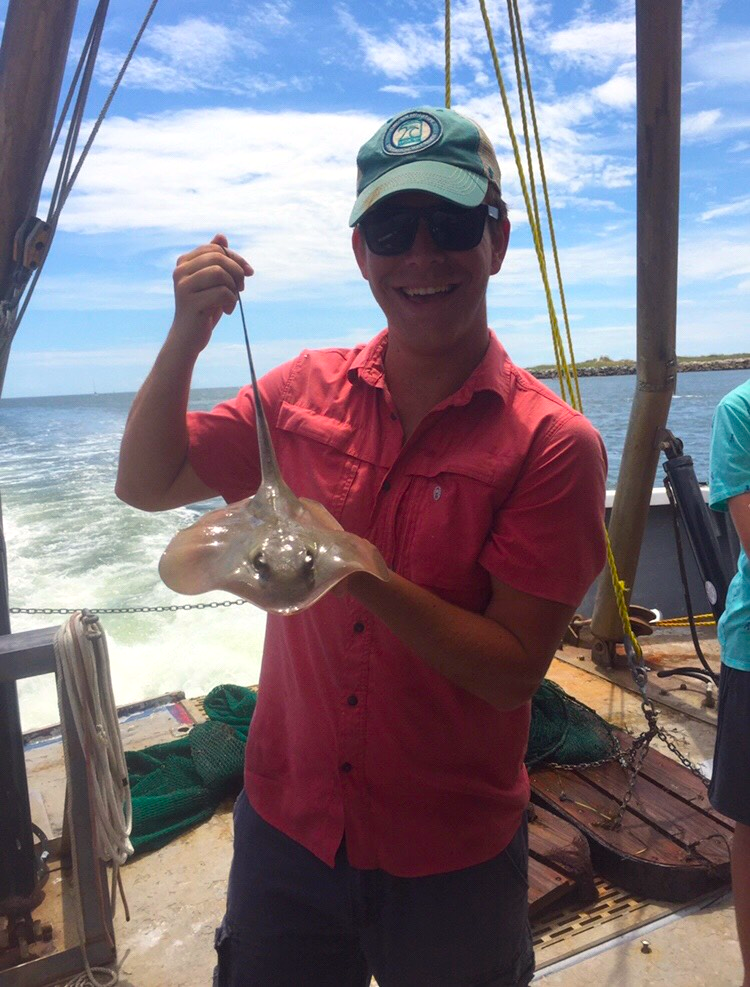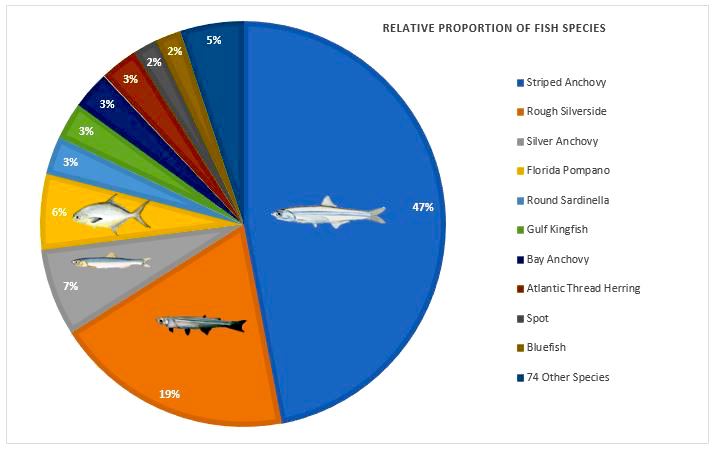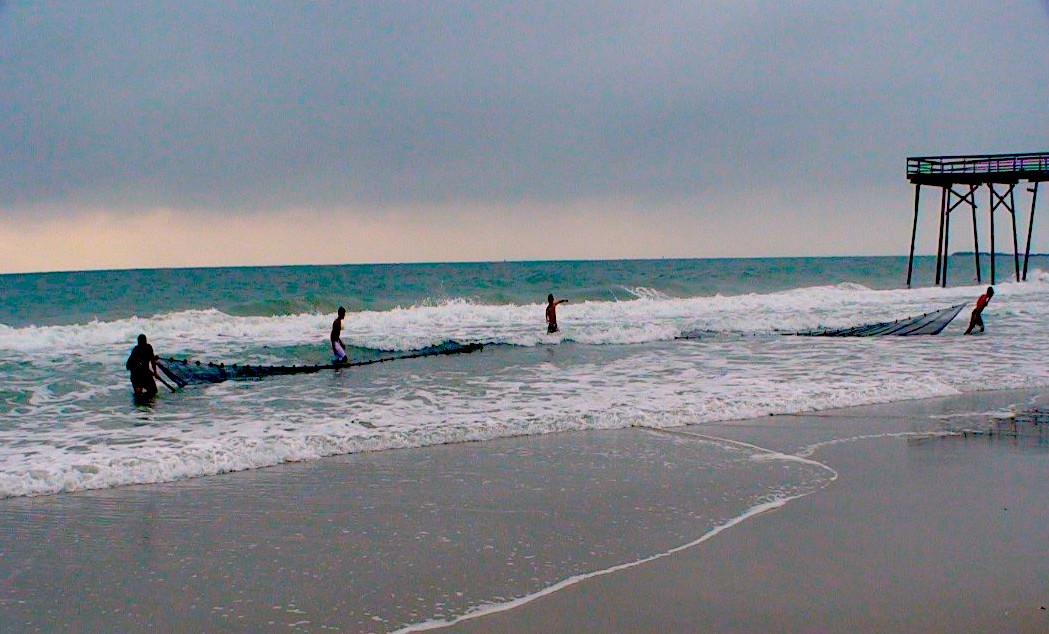What Fish Species Live in the Surf Zone?

At Wrightsville Beach, 84 different fishes use the surf zone.
Research Need

The surf zone is an important region for fish communities and anglers alike. Some fish are known to inhabit the surf zone throughout all of their life stages, such as particular species of silversides and other bait fish. Others utilize the surf zone as waypoints between deep ocean habitats and estuaries, such as Spot and Red Drum. The surf zone also serves as important nursery habitat for the young of many species, including recreational favorites like Florida Pompano and flounder.
This popular environment is surprisingly understudied. For example, in North Carolina we have had little established information on full fish communities that inhabit the surf zone.
How many fish species live in or use the surf zone? How long do they stay there? How does the diversity of the fish community change across seasons?
What did they study?
Researchers from the University of North Carolina Wilmington investigated the surf zone fish community at Wrightsville Beach, North Carolina, from 2004 to 2014, to determine which species inhabit the area and when they are present. The researchers repeatedly collected fish using long-haul seine nets at seven sites along the beach and identified and counted the number of fish collected from each pull.

What did they find?
Researchers identified 84 different species caught in the surf zone at Wrightsville Beach over the 11 years. Of the total number caught, 10 species made up 95% of the total catch, meaning that a few species use this habitat in much greater numbers than others (Figure 1, above). This suggests that the surf zone may represent an important habitat for these species.
What else did they find?
These researchers also found that the total number of fish in the surf zone peaks in the warm, summer months, as does the diversity of the fish community. In June through August, a typical angler at Wrightsville Beach is likely to find more fish and more species in the surf.
So what?
As our understanding of the surf zone fish community increases with findings like these, we can begin to highlight fish species that rely on the surf zone for important stages of their lives. Many of the fish species that live in the surf in their early stages eventually move into offshore waters and represent important recreational and commercial fisheries. It is important to understand how these fish use the surf zone (for instance, as a nursery for their young or as a permanent home), so that we can ensure careful management and protection of this habitat and these fish.
This is an ongoing study (that has not yet been published) to satisfy the requirements for a M.Sc. degree in Marine Biology at the University of North Carolina Wilmington. The NOAA/NMFS CMER Program, North Carolina Sea Grant, and the Got ‘Em On Live Bait Club funded this research. In addition, this work was supported by the UNCW Center for Marine Science.
Summary by Jackson Bialek
Lead photo: Various sizes of Trachinotus carolinus, the Florida Pompano, from one net pull in the surf zone, where juveniles and adults coexist. Below: Researchers pull a long-haul seine net through the surf. All photographs courtesy of Jackson Bialek.

The text from Hook, Line & Science is available to reprint and republish, but only in its entirety and with this attribution: Hook, Line & Science, courtesy of Scott Baker and Sara Mirabilio, North Carolina Sea Grant. HookLineScience.com
Sign up for the Hook, Line & Science newsletter here.
- Categories:



